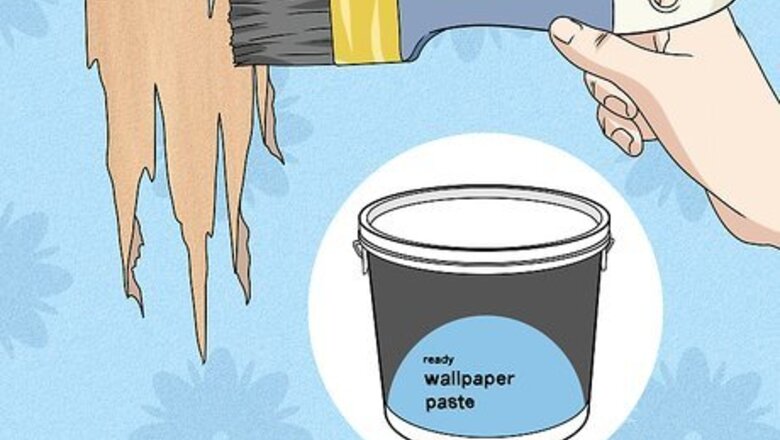
views
Painting the Wallpaper

Repair missing sections of wallpaper with wallpaper paste. Grab some wallpaper paste and use it to reapply any ripped or torn pieces of wallpaper to the wall. If any sections of the wallpaper are missing completely, buy new wallpaper and cover the bare areas. This may seem counterintuitive, but you need a smooth, even base to paint over. If you’re patching bare areas, try to get wallpaper in the same color scheme as the one that’s on your wall currently.
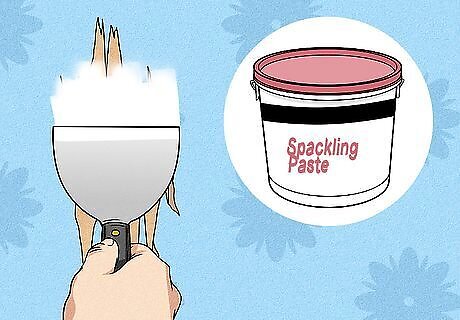
Spackle the seams of the wallpaper. Grab a putty knife and a bucket of spackling paste from the hardware store. Pick up a glob of spackle with the putty knife, then gently swipe it onto the seams of the wallpaper in a downward motion. Use the spackle on every seam in the wallpaper to create a smooth, even base. Try to make the spackle as smooth as possible on the first application so you don’t have to spend as long sanding it down. You can also use the spackle to fill any holes in the wall.
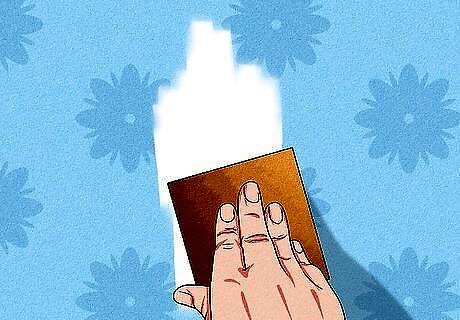
Sand the spackle down once it’s dry. After about 1 hour, grab some 60-grit sandpaper and work on smoothing out the spackle so it’s even with the rest of the wall. Wear a dust-filtering mask while you do this to avoid inhaling any dust particles from the spackle as you work. If you have an electric sander, you can use that instead. If you filled in any holes, you’ll probably need to sand down the edges of the patch. Sanding creates a lot of dust. If your walls are covered in white dust, use a damp towel to wipe them down before you paint.
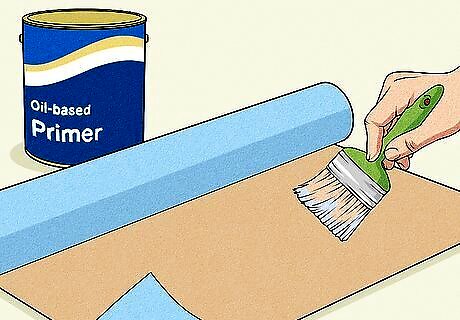
Prep the wallpaper with a coat of oil-based primer. Use an oil-based white primer to coat the wallpaper completely with a large paint brush or roller. Make sure you work in a well-ventilated room or put on a filtering mask to keep your lungs safe while using this product. Let the primer dry for about 30 minutes before you move on. Make sure you use an oil-based, not water-based, primer. Water-based primers can ruin the wallpaper, making it hard to paint over.
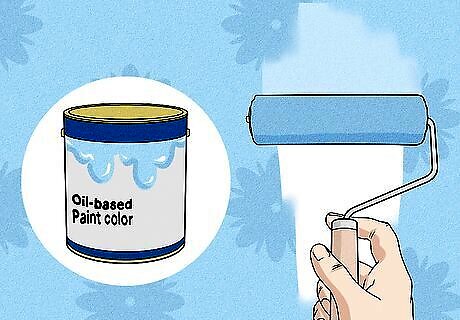
Paint an oil-based paint color on the wall. Pick out the color that you want to use on your wallpaper and apply the first coat using a paint roller. Darker colors will be easier to use, since they’ll cover the wallpaper faster, but you can choose any color that you’d like to. Again, you should use an oil-based paint, not a water-based one, for an even, smooth application.

Paint on a second coat to cover any patchy spots. Once the first layer of paint has dried, go in again with the same color around the entire wall. Focus on any areas that look patchy or uneven for a seamless looking wall. If you’re using a super light color, like yellow or cream, you may need a third coat.
Using Drywall Mud
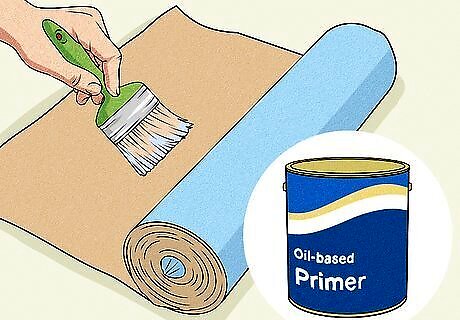
Prime the wallpaper with an oil-based primer. Use a can of white, oil-based primer to cover over all of your wallpaper for an even base coat. Let the primer dry for about 1 day before you move on. If there are any holes in the wall, fill those in before you use primer for an even surface. You don’t have to worry about making the primer look nice since it’s just providing a base coat.

Add water to joint compound until it looks like pancake batter. Pour out 1 bucket of joint compound, or drywall mud, into a paint roller pan. Add 1 c (240 mL) of water and stir it into the compound with a paint stirrer. Keep adding water until the mixture looks smooth and slightly runny, but not so watery that you can’t smooth it onto a paint brush. Read the instructions on the back of the joint compound before you start using it. You can find joint compound at most hardware stores.
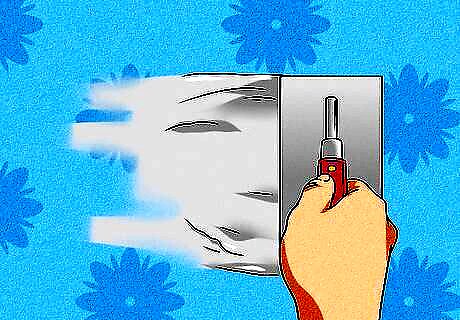
Smooth the joint compound onto the wall with a drywall trowel. Use a thin, flat drywall trowel to pick up a clump of the joint compound. Start from the top of the wall and use your trowel to smooth the mixture downward, coating the entire wall. Keep picking up more joint compound and smoothing it from the top down until your entire wall is covered. Try working in 3 by 3 ft (0.91 by 0.91 m) areas so you can make sure your drywall mud is smooth. The smoother you apply it the first time, the less work you’ll have to do later on. For small areas, use a putty knife instead of a drywall trowel.
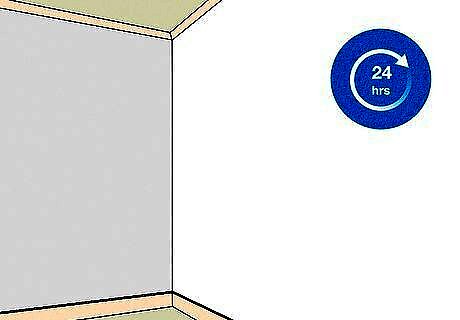
Leave the mud to dry for about 1 day. The drywall mud will become solid and white as it dries. To speed up the drying process, point a few fans at the wall to dry it out faster. You can also open up any doors and windows to give the room some air flow and speed up the drying process.
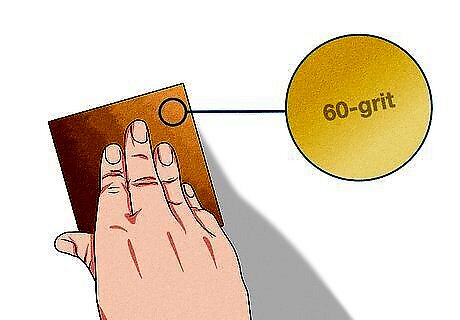
Sand the mud down with sandpaper until it’s smooth. Using a 60-grit sandpaper, rub down the drywall mud until the wall is level and even all throughout. Focus on spots around door frames and electrical outlets to ensure you get a smooth, even surface. Try wrapping a piece of sandpaper around a wooden block and stapling it in place to make your sanding easier. If you have an electric sander, you can use that.
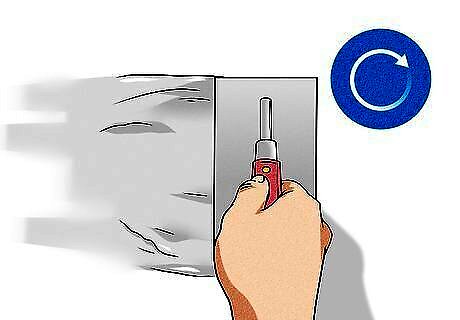
Apply another coat of joint compound if you need to. If you notice your wallpaper peeking through the drywall mud or it looks uneven in some places, use your drywall trowel again to smooth on more of the joint compound. Leave it to dry, then sand it down until it’s even. Once your drywall mud layers are dry, you can paint your wall like normal.
Hiding the Wallpaper
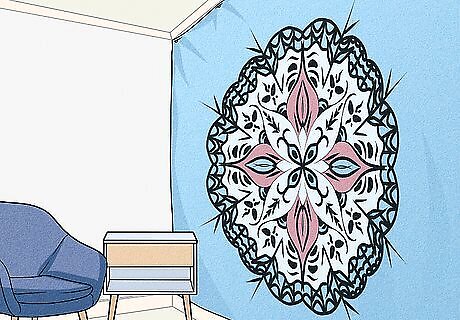
Hang up a tapestry to hide most of the wall. Pick out a tapestry made of fabric that spans across your entire wall. Use push pins on all 4 corners to cover up the wallpaper and keep it hidden behind a fresh new design. You can find tapestries in all colors and sizes at most home goods or art stores.
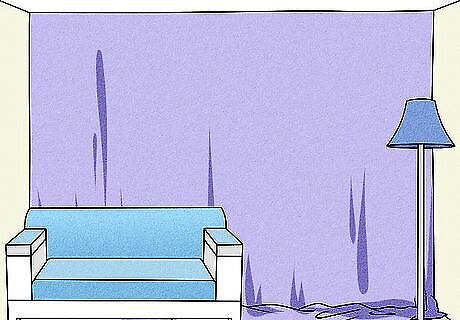
Try hanging sheets sheets of fabric to create a new wall color. Measure the height and width of your wall, then go to a fabric store and pick out a length of fabric with your wall’s dimensions. Use push pins on every corner to hang the fabric up and create a brand new wall. Try to pick thin fabric, like cotton or organza, so your fabric stays put on the wall.
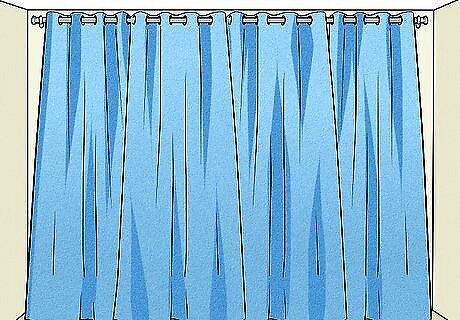
Install a curtain rod at the top of the wall to hide it with curtains. Measure the length of your wall and purchase a curtain rod at least that long. Using screws, mount the rod holders on either side of your wall, then thread 2 to 3 long curtains on the curtain rod. Extend the rod into each curtain rod holder to cover up the wallpaper. You can pick curtains that go all the way down to the floor, or you can choose some that hit mid-way on the wall to put shelves or a table underneath them.
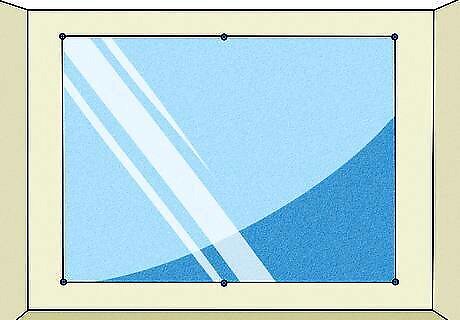
Put up a large mirror in the middle of the wall for a statement piece. Pick out a large mirror that takes up most of the wall space. Find a stud in the wall by knocking on it and listening for a full, not-hollow sound, then place 1 to 2 screws into the stud. Hang the mirror up with mounting hooks to keep the eye away from the wallpaper and onto the statement mirror. If you have a stud finder, you can also use that to look for a stud in the wall. Try looking for large mirrors at a thrift store to find a cheap one. If you can’t find a stud in your wall, insert a wall anchor into the wall before you put the screws in.
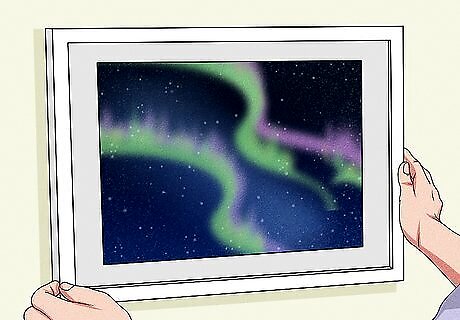
Use posters or photos to distract from the wallpaper. Pick out some framed posters, artwork, or photographs of you and your loved ones and arrange them on your wall. Use nails to hang up each piece and distract the eye from your wallpaper. You can even cover your entire wall with posters if you have enough!




















Comments
0 comment